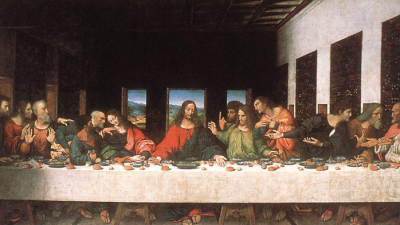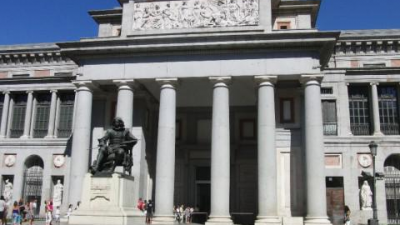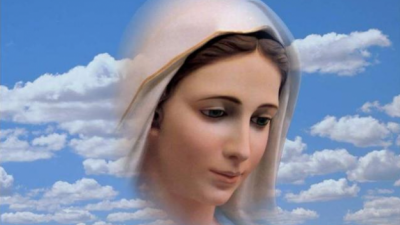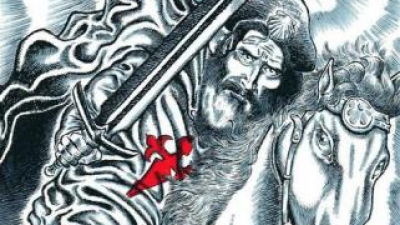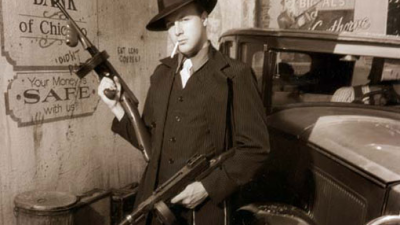The most famous disturbing paintings
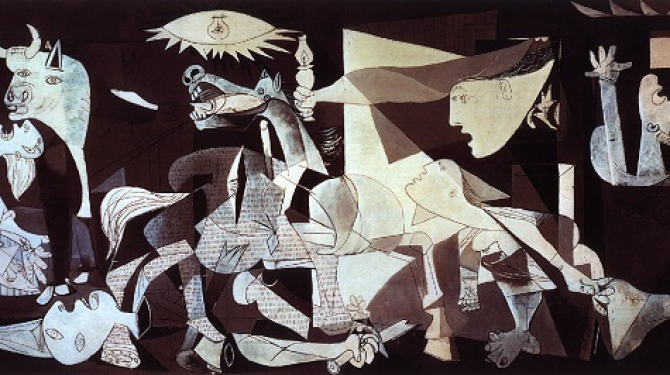
Source: listas.20minutos.es
Without taking into account the realists who always are and will be rare there are paintings that hit us with their images, well-known works that are still disturbing. Some paintings are impregnated with mystery and mystical enigmas and open to thousands of interpretations. No doubt they are works that captivate us.
TOP 20:
Egon Schiele's family
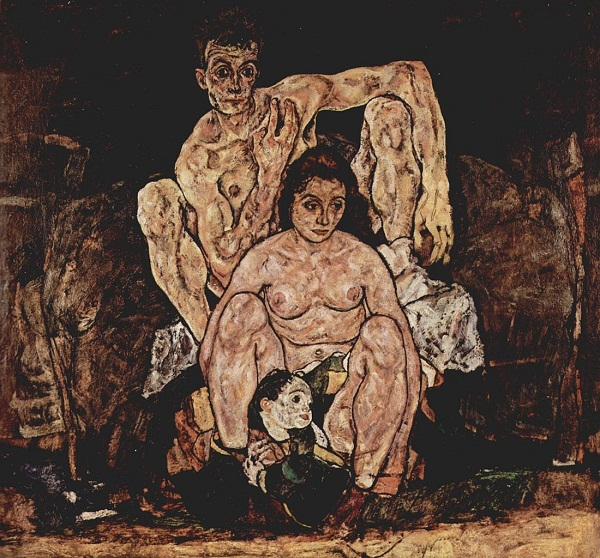
1918, oil on canvas. Gallery "Belvedere", Vienna Schiele painted this painting (which he left unfinished) the same year of his death. The male figure is undoubtedly the artist himself but the female is not his wife Edith. The boy was added later, when the painter learned of his wife's pregnancy. The picture is moving and seems to capture a vision of the future, full of hope. The work appears in the catalog of the Secession of 1818 with the title "Human couple squatting." Once the painter died, he was named the family. In this picture, premonitory, everything is unreal because it projects a future existence that nothing existed except in the painter's mind. The emotional harmony desired by the artist seemed to glimpse and consolidate. Gone is the bohemian life, the scandals and the difficult years with Wally. He was already a successful author. Klimt had died that same year and Schiele was erected as the great Austrian artist of the moment. His participation in World War I had been bureaucratic and he had not been sent to the front. Edith was pregnant, it was the first son of the painter and Egon wanted to paint the family that would make him happy and that, unfortunately, would never become. It is quite unusual realism in the painter. It presents a nude; The man, in which it is easy to recognize the author himself, is sitting on a sofa, in front of him, sitting on the floor, appears the figure of a woman with a small child between her legs wrapped in a blanket. They highlight the illuminated bodies of the adult characters and the child's face on the dark color of the background, the chromatic tones serve in this painting to highlight the body volumes, they are not thick lines filled with color, like his previous paintings. It is actually a pictorial work that shows a less aggressive language than the one previously used by Schiele. However, the painting denotes a melancholy, there is no passion; the looks of man and woman are lost in their thoughts, they are divergent looks. The characters remain together but isolated. It's as if Schiele sensed that luck was going to be denied.
TOP 19:
Man and woman before a lot of Joan Miró droppings
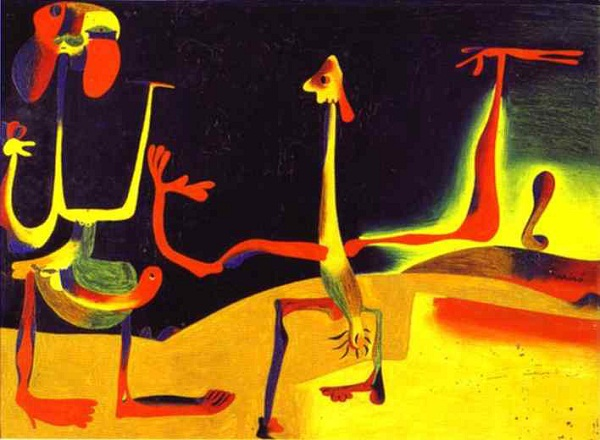
1935 Oil on copper. Joan Miró Foundation, Barcelona This work constitutes one of the most significant examples of the so-called "wild paintings". The anguish that the artist feels and materializes is an omen of the tragedy of the Spanish civil war. The orientation and gestures that accompany the dislocated bodies seem to imply an impossible hug. The expressiveness of the color, as opposed to the blackness of an apocalyptic sky, the chiaroscuro that accentuates the inconsistency of the members, the desert landscape and the excrement that presides over the scene, shape Miró's deeply pessimistic feeling.
TOP 18:
Marc Chagall's walk
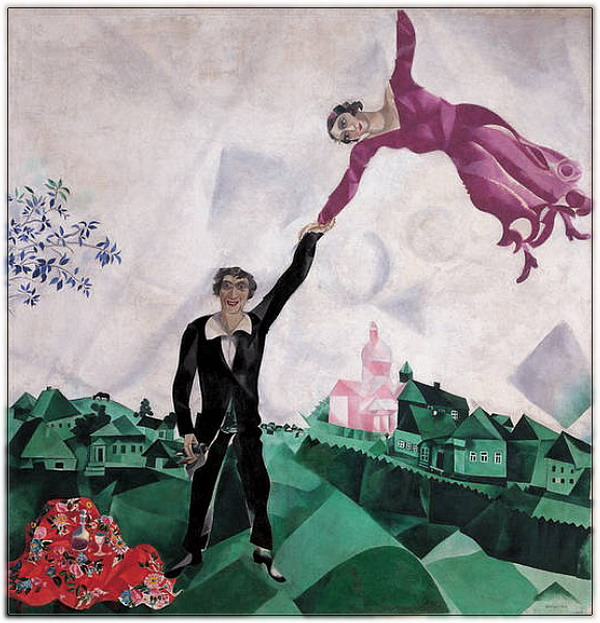
1917, oil on canvas. Tretyakov State Gallery The painter and his wife Bella Rosenfeld are portrayed in the painting, for whom he felt great love and adoration. It is a romantic walk of the two in love in the greenery of the surrounding countryside of Vitebsk, the city in which Chagall was born. Bella appears flying and Chagall is elegantly dressed in a black suit. In his right hand he holds a little bird. We can not forget the still life that appears in the lower left and which highlights the bright red of the fabric on which the still life is. It is a painting where reality coexists with fantasy.
TOP 17:
Apotheosis of Vasily Vereshchagin's war
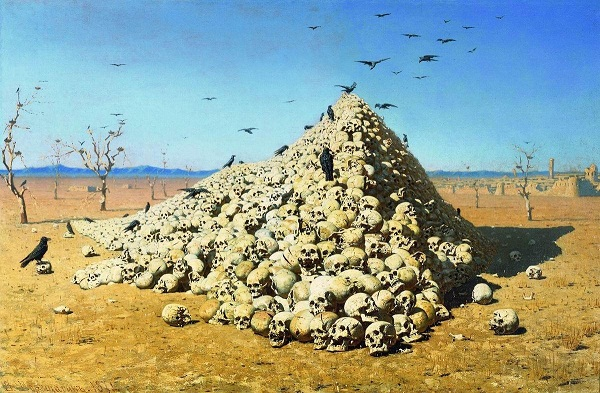
1871, oil on canvas. Tretyakov State Gallery, Moscow It portrays a desert landscape in whose center a huge pile of human skulls rises to which numerous crows fly over. This oil has become a symbol of Russian pacifism
TOP 16:
Where we come from? About us? Where we go? by Paul Gauguin
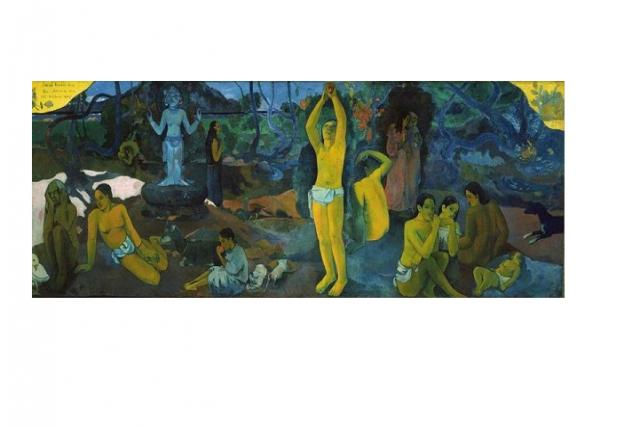
897-1898, oil on canvas. Boston Museum of Fine Arts Gauguin himself said that after painting the “Where do we come from? About us? Where are we going? ”He had attempted suicide. Whether this is true or not, the truth is that months before painting his masterpiece, things were twisted in such a way that everything presaged a tragic end that would take five years to arrive. In the first place, its economic situation becomes practically untenable - which would not prevent it, however, from rejecting an assignment from the French Ministry because it is considered an “alms” - and on the other hand syphilis and alcoholism turn its physical state into a torture. However, the hardest blow literally came to him by mail: in the spring of 1897, a letter informed him of the death, with just 21 years, of his daughter Aline. This death meant not only the artist's break with his wife, which he irrationally accused of losing his daughter, but with the Faith he could still keep. In a devastating letter dated that same year, Gauguin states: “My daughter has died. I no longer love God. ”In this state of mind Gauguin undertakes the titanic task of painting his artistic testament, the work that brings together all the other works of the artist:“ Who are we? Where we come from? Where are we going? ”Is not simply the most colossal work that Gauguin painted life (139-375 cm.), But it completely develops the philosophical and pictorial doctrine of the artist. With a strikingly horizontal format, the canvas follows an inverse chronological evolution, starting at its left end with the bleak figure of a mummy that, in a fetal position, covers its ears as if trying to stay oblivious to the entire scene; while in the far left, a baby, a symbol of innocence and life, is cared for by three young Tahitians. In the center, the figure of the man who picks a fruit symbolizes the temptation and fall of man. Structuring the painting in an inverse chronological sense, Gauguin seems to point out the primitive, the innocent, as the only way to be followed by the artist. NOTE: So that it can be seen horizontally on the page I had to make this composition with the image.
TOP 15:
. 5, 1948 by Jackson Pollock
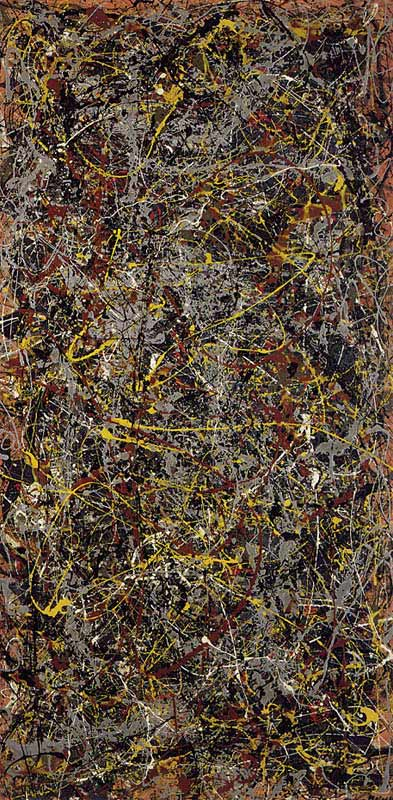
1948, fiber board Over and over again, innovative artistic styles become the new mainstream. Jackson Pollock is considered one of the main contributors to the art of abstract expressionism. The painting was created on a fiber board of eight by four meters. The style that Jackson Pollock used for this work of art was the use of liquid paints. He decided to move away from the traditional style of using paintings on canvas. No. 5 can be seen with huge amounts of yellow and brown paint sprayed on it. Pollock was inspired to create this painting of his own emotions. He deviated from the traditional use of liquid paints. The design of the painting appears together as and inspired different emotions in which they see the painting. It was this complexity and dedication that brought this work of art to the top of the art scene. The use of action paint or spontaneous dripping, stains, and shedding of liquid paint was the main style that Pollock used for No. 5. Pollock also wanted to bring a new perspective in the painting. He wanted to convey through No. 5 the culmination of the artist's emotion in his own unconventional painting technique.
TOP 14:
Demon sitting in a garden of Mikhail Vrubel
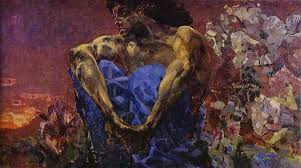
890, oil on canvas. Tretyakov Gallery, Moscow He presents himself as a dreamy and sensitive devil; contemplating a sunset between flowers. Image far removed from what we have of the devil, the artist spoke about his most famous painting "The Demon - the spirit is not so much evil as suffering and sadness-"
TOP 13:
The feast of Baltasar de Rembrandt
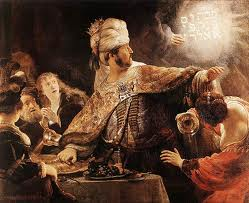
1635. National Gallery of London. The work includes an episode of the story of Baltasar, king of Babylon. During the siege of the city by the Persian general Cyrus, Baltasar gathered all his nobles and served the wine in the dishes from the sacking of Jerusalem. During the banquet a mysterious hand appeared that wrote an indecipherable text on the wall, referring to the division of his kingdom. That night Baltasar died. Again, it is surprising how Rembrandt has captured the expressions of the figures, in this case of surprise and fear of the mysterious inscription, especially Baltasar, which retracts when contemplating the apparition. The clear light is the other great protagonist, creating strong contrasts of light and shadow characteristic of tenebrism. The painter's brushstroke has become a bit looser, as can be seen in the king's cape, although, despite such ease, details are still clearly distinguished, such as the still life of fruits on the table, the jewels of the Women or the turban. The color is dark, although it has clear notes, such as the beautiful red dress of the woman on the right, the king's cape or the white turban. It is certainly a masterpiece.
TOP 12:
Claude Monet's Waterloo Bridge
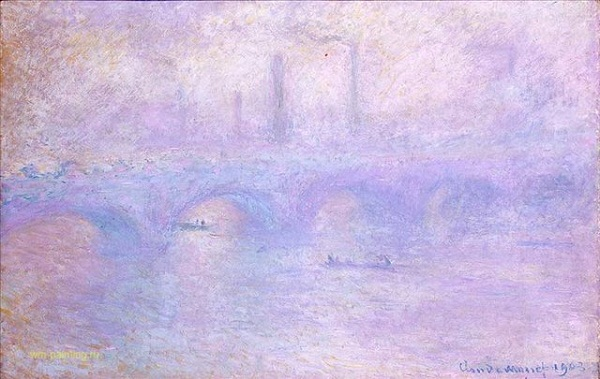
1899, oil on canvas. Hermitage Museum, St. Petersburg Seeing the painting up close, it is almost impossible to distinguish a central circle, as you take distance, the outline of the bridge appears, you can even see the boats in a logical chain that unites all the work.
TOP 11:
Erosion of Jacek Jerka
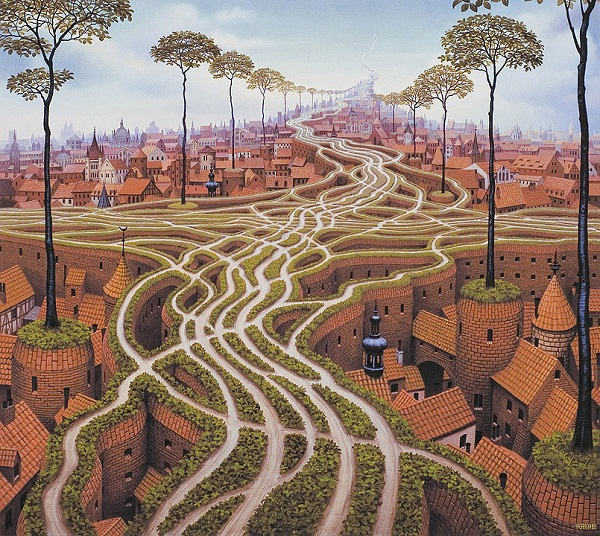
2000 the Polish painter known worldwide for his incredible paintings that combine reality and the creation of another parallel reality, his work is detailed and very moving.
TOP 10:
The three ages of Gustav Klimt's wife
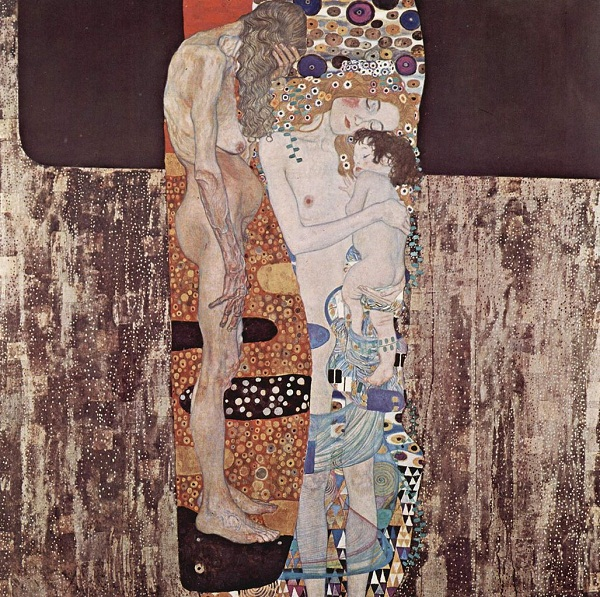
1905, oil on canvas. National Gallery of Modern Art in Rome The three ages of women were exhibited for the first time at the 1908 Art Exhibition next to El Beso, both fabrics showing a similar composition since the side areas are uncovered and the background is constituted by color spots In the center of the scene we can observe the three ages of the woman before a field of yellow flowers in which we observe imperfect golden and black ellipses, remembering this background to the Byzantine mosaics of Ravenna that so attracted the teacher. In front and in the foreground the mother appears, with her daughter in her arms, resting her head on that of her offspring. She has her eyes closed and a gesture of reverie, like the little girl, whose sex we cannot contemplate when her figure is pressed against the mother. A naked old woman, on her side, with her face covered by long hair, bringing her left hand towards her face, is the representation of old age. In this way we can appreciate the representation of birth, maturity and decay, as shown in the Philosophy. Again, Klimt evokes the important role of women in life, referring to their feminine side, what some specialists interpret as the Oedipus rebellion. The Viennese master has been inspired by a work by Rodin for the figure of the old woman, expressing admiration for the French sculptor. Once again, we find the characteristic taste for wavy lines, the superb drawing and decorativism that define Klimt's painting, in tune with the works of art-nouveau and Secession, precisely the year that a split within the group faced with the pressure of the "naturalists", opposed to the global art philosophy defended by the promoters of the Vienna Workshops, including Klimt himself. The bright tones used contrast with the neutral background, appreciating the renunciation of the traditional perspective that is manifested in the Viennese master.
TOP 9:
Bill Stoneham's hands resist him
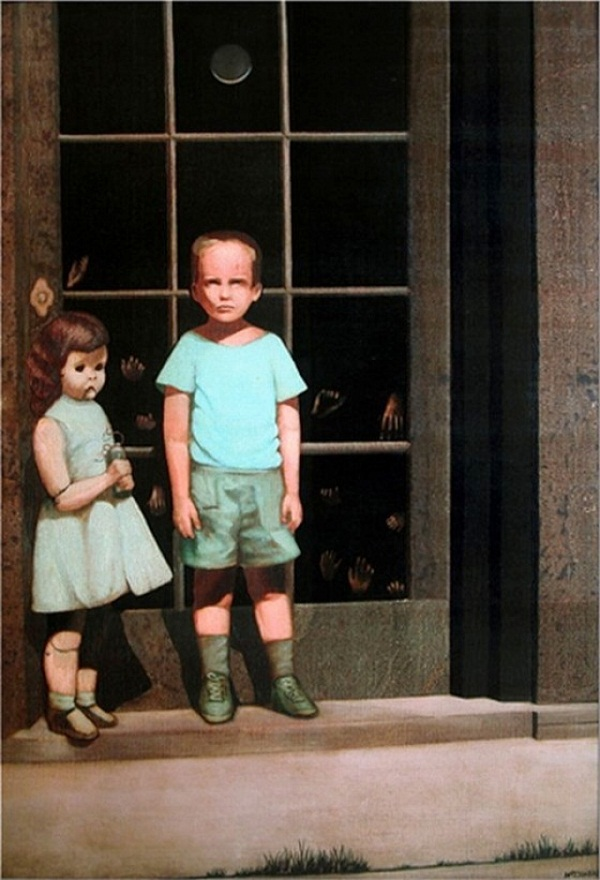
1972 The painting was created by the American painter Hill Stoneham, in 1972. It represents a young man next to a doll, standing in front of a door with glass panels against which many hands are pressed. According to the artist, the child is based on a 5-year-old photograph of himself, and is interpreted as the door being a representation of the dividing line between the waking world and the world of dreams and possibilities, and the doll is a guide that accompanies the child through it. The hands represent the different life possibilities of the child. This disturbing - and for some, horrible - painting became the object of an urban legend in February 2000, when it was put up for sale on eBay, and its complex and frightening baggage was made public.
TOP 8:
American Gothic by Grant Wood
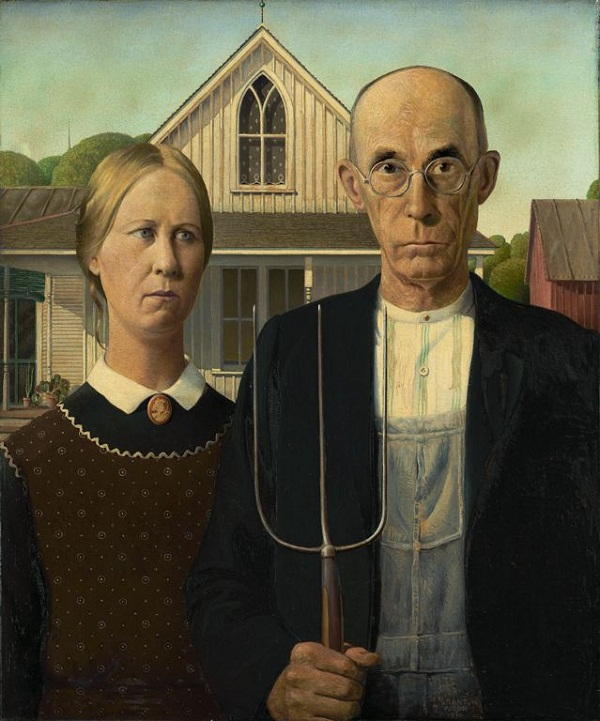
1930, oil on wood chipboard. Art Institute of Chicago, The picture illustrates a farmer holding a gallows (trident) and a young woman, in front of a rural Gothic style house. It is one of the best-known images of American art of the twentieth century and has become an icon in popular culture being one of the most recognized and parodied images of the modern world. Wood wanted to represent the traditional roles of men and women, since the man holds a rake symbolizing hard work. Wood took his sister Nan (1900-1990) and his dentist Dr. Byron McKeeby (1867-1950) from Cedar Rapids (Iowa) as models.
TOP 7:
The Arnolfini portrait of Jan van Eyck
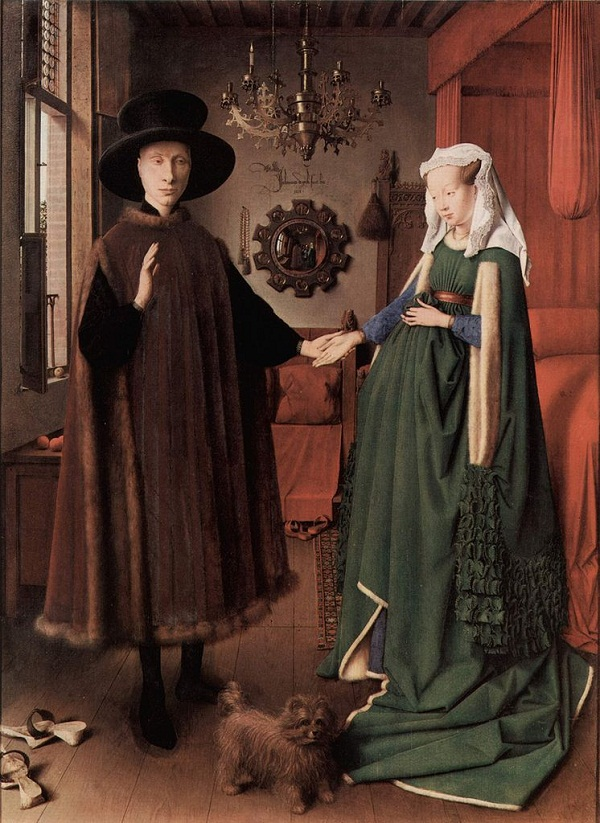
1434, oil on wood. London National Gallery, London Represents the rich merchant Giovanni Arnolfini and his wife Jeanne Cenami, who settled and prospered in the city of Bruges (now Belgium), between 1420 and 1472. Today, art historians discuss exactly the image that the picture presents; The dominant thesis, introduced by Erwin Panofsky in a 1934 essay, argues that the image corresponds to the marriage of both, held in secret and witnessed by the painter. However, many other interpretations have been proposed about the picture, and the current consensus is that Panofsky's theory is hardly sustainable. In any case, the painting - since 1842 at the National Gallery in London after mysteriously disappearing in 1813 from the Royal Palace in Madrid - is considered one of van Eyck's most notable works. It is one of the first portraits of non-hagiographic theme that are preserved, and at the same time an informative costumbrista scene. The couple appears standing in their bedroom; the husband blesses his wife, who offers him his right hand, while resting his left hand on his belly. The pose of the characters is theatrical and ceremonial, practically hieratic; some specialists see in these phlegmatic attitudes a certain comedy, although the extended interpretation that the representation of a wedding sees in the portrait attributes its pompous air to it.
TOP 6:
The two Fridas of Frida Kahlo
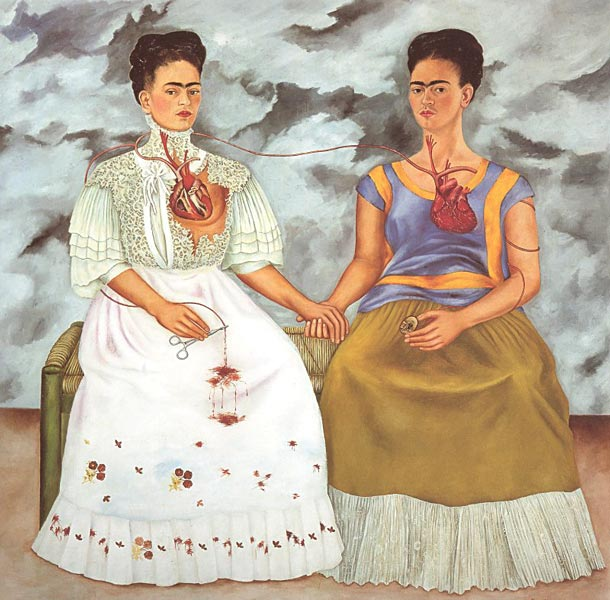
1939. Frida Kahlo Museum in Coyoacán, Mexico Shortly after her divorce from Diego Rivera, Frida completed this self-portrait of two different personalities. Frida admitted that it reflects the emotions that surrounded her marriage crisis. On the right represents the respected and Mexican wife Frida, dressed in Tehuana in her hand she holds an amulet. On the left, a much more European Frida with a Victorian dress, the hearts of both are in sight, in which Frida reflects her pain.
TOP 5:
The Garden of Delights by Hieronymus Bosch (El Bosco)
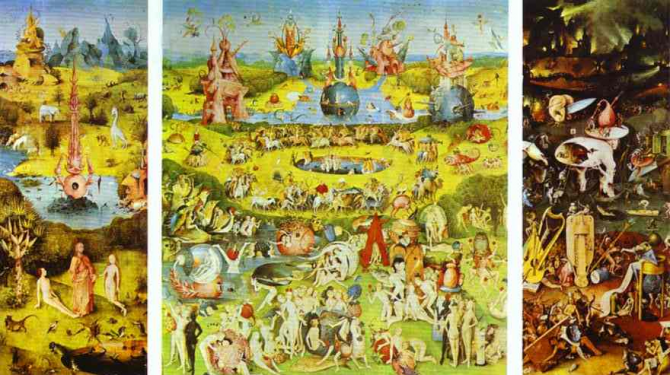
1500-1510, oil on wood. Prado Museum in Madrid The Garden of Earthly Delights is the best known work of the Dutch painter. It is a triptych composed of a central board and two sides (painted on both sides) that can be closed on it. Work of great symbolism (which has not yet been completely deciphered), such as The Hay Wagon and the Last Judgment, the Garden of Earthly Delights is subtracted from any traditional iconographic classification. Open triptych When opened, the triptych presents, in the left panel, an image of paradise where the last day of creation is represented, with Eve and Adam, and in the central panel the unleashed madness is represented: lust. In this central table the sexual act appears and it is where all kinds of carnal pleasures are discovered, which are the proof that man had lost grace. Finally we have the table on the right where the sentence is represented in hell; In it the painter shows us an apotheosic and cruel scenario in which the human being is condemned for his sin. The structure of the work, in itself, also has a symbolic framing: when opened, it really closes symbolically, because in its content is the human beginning and end. The beginning in the first table, which represents Genesis and Paradise, and the end in the third, which represents Hell.
TOP 4:
The lovers of René Magritte
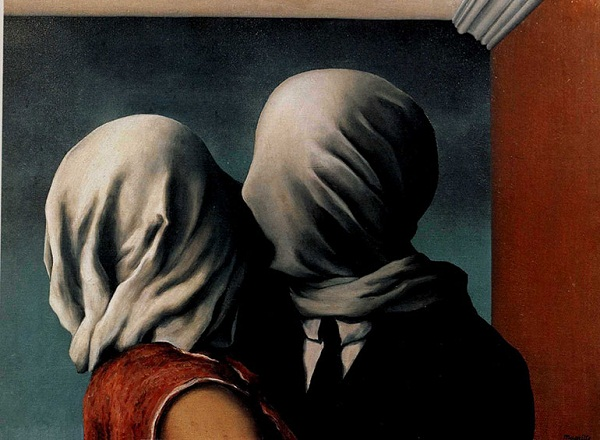
1928, oil on canvas. Brussels. Private collection This well-known painting by Belgian painter René Magritte (1898-1967) is one of his best known works, and as a good part of his paintings, enigmatic and disturbing. There are two versions of lovers. In both the characters appear with faces covered with damp cloths that prevents us from guessing who is under the cloth. In the other version the lovers appear next to each other, but in this case without kissing and in a natural landscape. In this case the bottom of the painting is a dark background, it could be a stormy sky that we see through a construction open to the outside. The characters, who appear to be a man and a woman, are bound and kissing, although a damp white cloth prevents them from doing so naturally. A cloth that has been interpreted with the memory of his mother's suicide. When they took her out of the river, the artist himself saw her with a wet shirt covering her face. The interpretation of the picture is confusing. As much as it relates to the death of her mother, nothing in this picture reminds her or seems to relate to this fact, except the damp cloth. A kiss of love is the taste of the kissed person, the smell and the warmth of the faces rubbing each other, or simply the contact of tongues and lips. The damp cloth acts as a barrier preventing the kiss itself from being a kiss of love, eliminating those feelings in lovers. Some authors have wanted to interpret it as a furtive kiss from two lovers whose relationship is prohibited in the eyes of others, seeking anonymity. The cloth has also been interpreted as a limitation of their senses, depriving them of the smell and warmth of the other in the act of kissing. The greatness of Magritte lies in the fact that with a few bold colors and strong brushstrokes, and a relatively simple composition, he manages to illustrate a complex scene, fleeing complicated and elaborate artifacts and symbologies.
TOP 3:
The Guernica by Pablo Picasso
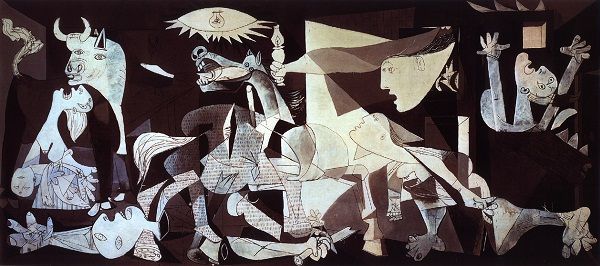
1937, oil on canvas. Reina Sofía Museum, Madrid Picasso renounces color to accentuate the drama and only uses the range of grays, white and black, is what in art is called grisalla. It is a "sound" picture, the characters shout, gesture and die under the blind bombs that end with everything. The denunciation of violence is here timeless and has always been used as a song against the unreasonable destruction and death in any war. Picasso paints the four women in desperate attitudes, they are the defenseless civilian population, but also the military fallen in defense and the animals, alien to human madness. Expressionism and pain are present throughout the work. A characteristic that the author uses frequently is the simultaneous representation of several planes in the faces, as if we saw them both in front and in profile, hence an eye different from the other, producing a globalizing vision. Despite having passed Picasso's Cubist era, the painter uses Cubist resources again. Technically Guernica has Cubist features (reduces natural forms to geometric shapes) but also uses expressionism in the extreme gestures of the characters and a great purity and definition of lines that reminds us of neoclassicism.
TOP 2:
Leonardo da Vinci's Last Supper
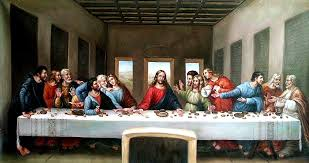
1495 -1497, mural to the temple and oil Santa Maria delle Grazie in Milan Leonardo has chosen, perhaps at the suggestion of the Dominicans, the perhaps most dramatic moment. It represents the scene of the Last Supper of the last days of the life of Jesus of Nazareth. The affirmation of Jesus "one of you will betray me" causes consternation in the twelve followers of Jesus, and that is the moment that Leonardo represents, trying to reflect "the movements of the soul", the different individualized reactions of each of the twelve apostles: some are amazed, others get up because they have not heard well, others are frightened and, finally, Judas goes back to feeling alluded to. Although based on the preceding representations of Ghirlandaio and Andrea del Castagno, Leonardo creates a new formulation. As can be seen in the preparatory drawing, Leonardo initially thought of the classical composition, with Judas in front of the table, and the other eleven apostles in front, with Jesus Christ in the middle as one more. Leonardo turned away from this iconographic tradition and includes Judas among the other apostles, because he has chosen another moment, after his announcement that one will betray him. Leonardo changed the position of Jesus Christ, who was initially in profile talking to John the Evangelist, who seems standing beside him, (there is another apostle who was also standing), and places him in the center, towards which all the lines converge of escape, standing out even more when profiling against the window of the center, topped with an arch and separating it from the apostles. On both sides of Jesus Christ, isolated in a triangle and highlighted with red and blue colors, are the apostles, grouped three by three. The great fame of this work has aroused the interest of many researchers and also of some novelists who seek to solve the supposed mysteries and enigmas that surround it, for example Clive Prince and Lynn Picknett in his book Templar Revelation and Dan Brown in his novel The Da Vinci code affirm that the figure to the right of Jesus (left as you look), is not really Juan, but a female figure, the many works of art that have been inspired by the painting and the existing parodies contribute to convert The last dinner in one of the most magnificent works in the History of Art.
TOP 1:
The shout of Edvard Munch
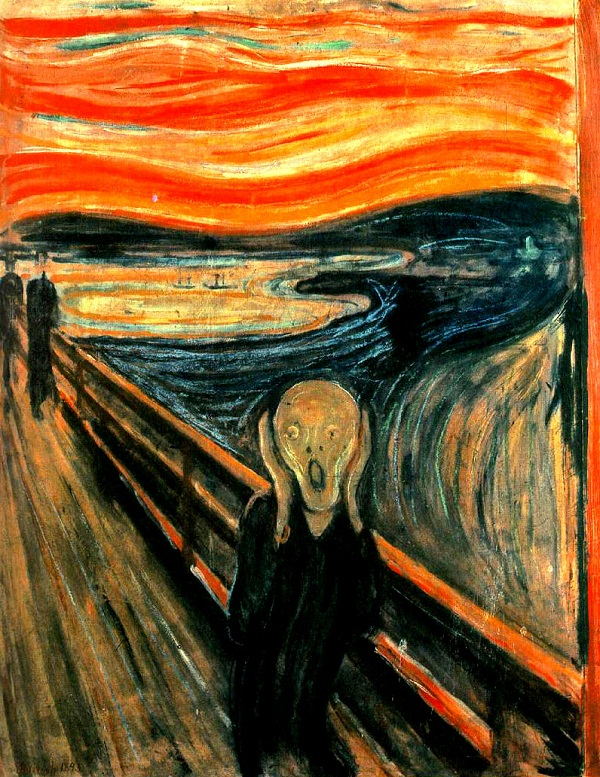
1893, oil on cardboard. National Gallery, Oslo The Scream ", the masterpiece of Edvard Munch, became a worldwide symbol of the anguish that appears multiplied in reproductions, inscriptions on t-shirts, children's dolls and a multitude of objects, in addition to causing an incessant debate among the experts, but exactly what is that surreal figure doing in the painting, clutching his head with his arms and opening his mouth: does he scream or does he hear a scream? Although the general public seems sure to scream, the experts disagree.


